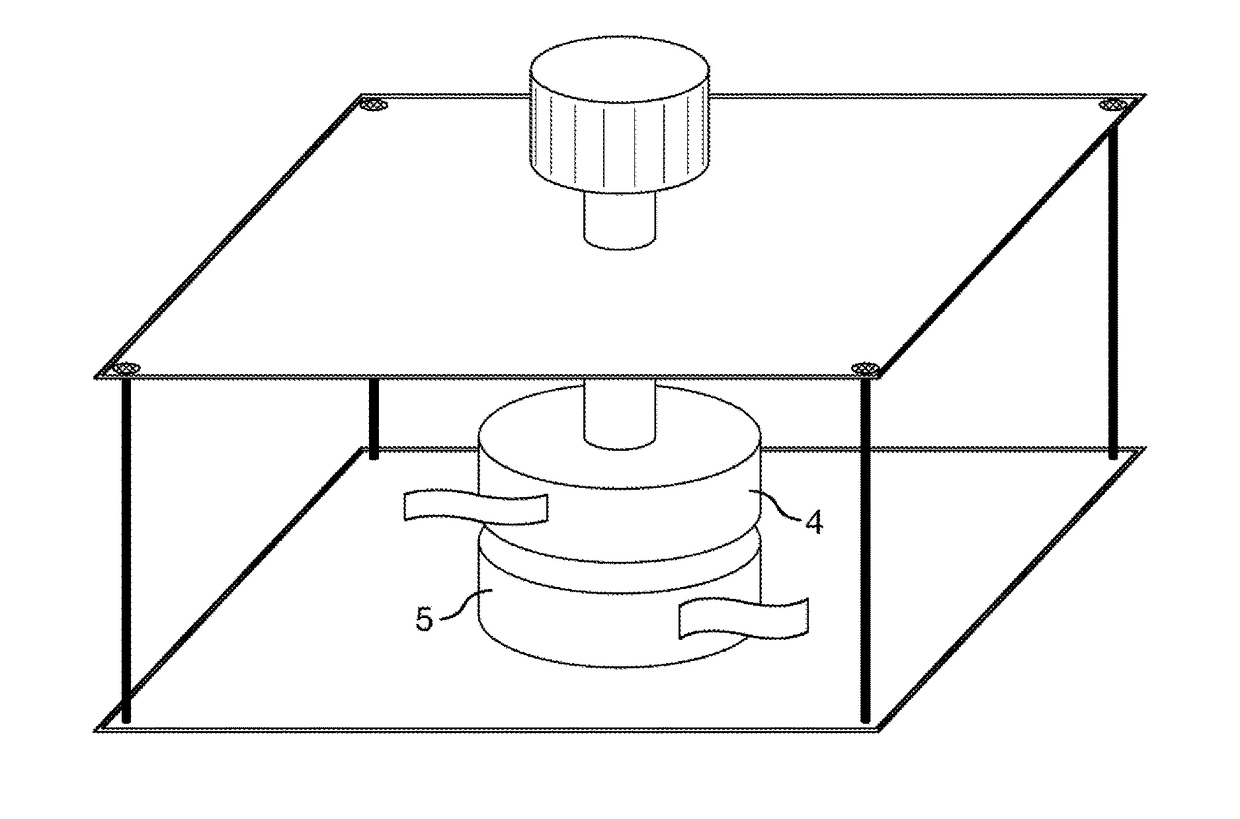Method for producing thermoplastic resin composition film
a technology of thermoplastic resin and composition film, which is applied in the field of thermoplastic resin composition film production, can solve the problems of noble metals, eroded connection parts between carbon fiber aggregates and copper wires, and extremely unstable output of renewable energy, and achieve excellent tensile elongation, bending resistance, and flexibility.
- Summary
- Abstract
- Description
- Claims
- Application Information
AI Technical Summary
Benefits of technology
Problems solved by technology
Method used
Image
Examples
example 1
[0187]A formulation having the formulation ratio shown in Table 1 was melt-kneaded using a 5-liter “Intensive Mixer” (trade name) available from Nippon Roll MFG. Co., Ltd., which was then pelletized using a hot-cut process to obtain pellets of a thermoplastic resin composition. After that, the obtained pellets of the thermoplastic resin composition were subjected to preliminary heating at 160° C. using a planetary multi-screw extruder, and they were then introduced into a clearance between the first roller and second roller of a two-roll type calender-roll film-forming apparatus having a roller diameter of 305 mm (12 inches) and a roller width of 920 mm available from Nippon Roll MFG. Co., Ltd., to cause the melted film of the thermoplastic resin composition to continuously wind on the first roller, with the first roller set to a temperature of 175° C. and a rotation rate of 2.6 rpm, and the second roller set to a temperature of 170° C. and a rotation rate of 2.0 rpm. Subsequently, ...
example 2
[0189]The same procedures as in Example 1 were followed in all respects except that the preliminary heating temperature was changed to 130° C., whereby a film with a thickness of 300 μm was obtained. It is to be noted that when the film-forming method in which trimming of both sides is carried out after peeling rather than on the first roller was attempted, there were sometimes cases where a flaw(s) occurring on the side(s) of the melted film at the time of peeling the melted film propagated to tear the melted film. Therefore, it was found that at a preliminary temperature of 130° C., trimming needs to be carried out on the first roller. The tests (i) to (vi) for physical properties were performed for the obtained film. The results are shown in Table 1.
example 3
[0191]The same procedures as in Example 1 were followed in all respects except that the preliminary heating temperature was changed to 180° C., whereby a film with a thickness of 300 μm was obtained. In addition, even with the film-forming method in which trimming of both sides is carried out after peeling rather than on the first roller, a film having a thickness of 300 μm was able to be obtained without trouble. The tests (i) to (vi) for physical properties were performed for the obtained film. The results are shown in Table 1.
PUM
| Property | Measurement | Unit |
|---|---|---|
| melting points | aaaaa | aaaaa |
| melting points | aaaaa | aaaaa |
| temperature | aaaaa | aaaaa |
Abstract
Description
Claims
Application Information
 Login to View More
Login to View More - R&D
- Intellectual Property
- Life Sciences
- Materials
- Tech Scout
- Unparalleled Data Quality
- Higher Quality Content
- 60% Fewer Hallucinations
Browse by: Latest US Patents, China's latest patents, Technical Efficacy Thesaurus, Application Domain, Technology Topic, Popular Technical Reports.
© 2025 PatSnap. All rights reserved.Legal|Privacy policy|Modern Slavery Act Transparency Statement|Sitemap|About US| Contact US: help@patsnap.com


